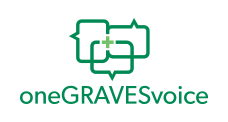Trusted Resources: Evidence & Education
Scientific literature and patient education texts
Does Early Response to Intravenous Glucocorticoids Predict the Final Outcome in Patients With Moderate-To-Severe and Active Graves’ Orbitopathy?
source: Journal of Endocrinological Investigation
year: 2017
authors: Bartalena L, Veronesi G, Krassas GE, Wiersinga WM, Marcocci C, Marinò M, Salvi M, Daumerie C, Bournaud C, Stahl M, Sassi L, Azzolini C, Boboridis KG, Mourits MP, Soeters MR, Baldeschi L, Nardi M, Currò N, Boschi A, Bernard M, von Arx G, Perros P, Kahaly GJ
summary/abstract:Purpose:
Intravenous glucocorticoids (ivGCs) given as 12-weekly infusions are the first-line treatment for moderate-to-severe and active Graves’ orbitopathy (GO), but they are not always effective. In this study, we evaluated whether response at 6 weeks correlated with outcomes at 12 (end of intervention) and 24 (follow-up) weeks, particularly in patients initially unresponsive.
Methods:
Our database (Bartalena et al. J Clin Endocrinol Metab 97:4454-4463, 10), comprising 159 patients given three different cumulative doses of methylprednisolone (2.25, 4.98, 7.47 g) was analyzed, pooling data for analyses. Responses at 6 weeks were compared with those at 12 and 24 weeks using three outcomes: overall ophthalmic involvement [composite index (CI)]; quality of life (QoL); Clinical Activity Score (CAS). Responses were classified as “Improved”, “Unchanged”, “Deteriorated”, compared to baseline.
Results:
Deteriorated patients at 6 weeks for CI (n = 8) remained in the same category at 12 weeks and 7/8 at 24 weeks. Improved patients at 6 weeks for CI (n = 51) remained in the same category in 63% and 53% of cases at 12 and 24 weeks, respectively. Unchanged patients at 6 weeks (n = 100) eventually improved in 28% of cases (CI), 58% (CAS), 32% (QoL). There was no glucocorticoid dose-dependent difference in the influence of early response on later outcomes.
Conclusions:
Patients who deteriorate at 6 weeks after ivGCs are unlikely to benefit from continuing ivGCs. Patients unresponsive at 6 weeks still have a significant possibility of improvement later. Accordingly, they may continue ivGC treatment, or, alternatively, possibly stop ivGCs and be switched to a second-line treatment.
DOI: 10.1007/s40618-017-0608-z
read more full text
Related Content
-
Randomized Controlled Trial of Rituximab in Patients With Graves’ OrbitopathyContext: Graves' orbitopathy (GO) is a ...
-
Emotional/Psychological Effects – Thyroid Eye Disease (TED)Thyroid Eye Disease (TED) is associated ...
-
Michael K. Yoon, MDDr. Michael Yoon is a member of the Mass...
-
Maria Antonietta Altea, MDMaria Antonietta Altea, MD, is associate...
-
Surgical Treatment of Diplopia in Graves’ Orbitopathy PatientsPurpose: To review the authors' current...
-
Thyroid Eye DiseaseThyroid eye disease may occur in patient...
-
Risk Factors For Developing Thyroid-Associated Ophthalmopathy Among Individuals with Graves’ DiseaseImportance: Thyroid-associated ophthalm...
To improve your experience on this site, we use cookies. This includes cookies essential for the basic functioning of our website, cookies for analytics purposes, and cookies enabling us to personalize site content. By clicking on 'Accept' or any content on this site, you agree that cookies can be placed. You may adjust your browser's cookie settings to suit your preferences. More Information
The cookie settings on this website are set to "allow cookies" to give you the best browsing experience possible. If you continue to use this website without changing your cookie settings or you click "Accept" below then you are consenting to this.



 myBinder
myBinder




 Facebook
Facebook